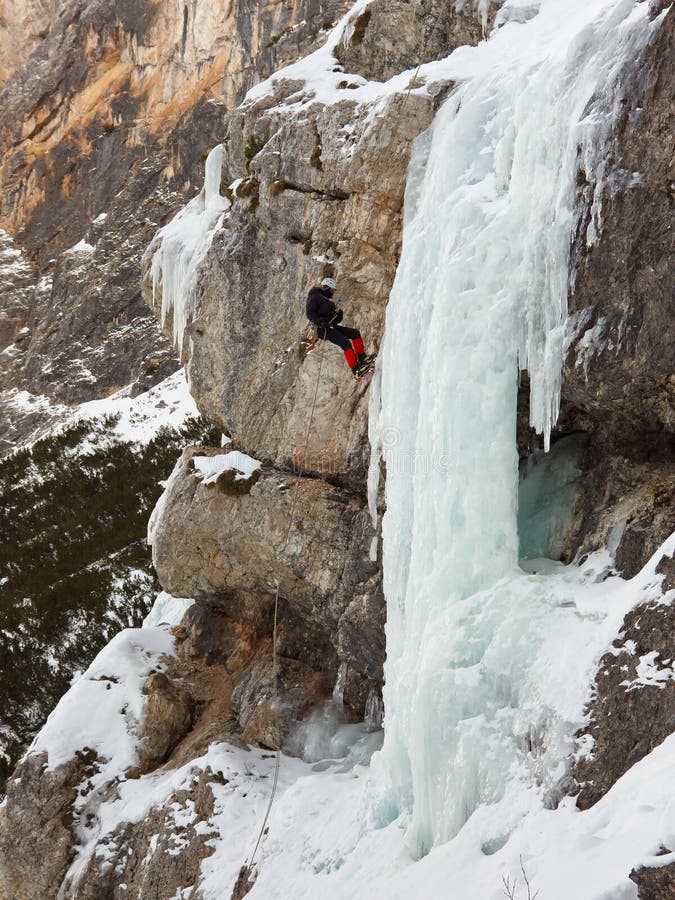

Climbers are attracted to frozen waterfalls because the surface is always changing. The snowball effect of those gumming water molecules results in a waterfall that's frozen in midair. In freezing temperatures, water molecules begin to slow down and eventually stick together, which is how water changes from a liquid to a solid. I’m thrilled to get the chance to live and learn from this.It's probably hard to imagine that the rushing water of a falls could freeze, but it can. That being said, I had no illusions about the fact that I had accepted a very high level of risk while climbing this dagger. The intensity of the climbing pushed me to forget that I was at the most crucial point in the climb and needed to keep the gentle technique going. Watching how hard I was swinging at the end, compared to the rest of the climb, is amazing. For this type of feature, the uncertainty factor is high! A challenging part for me to deal with at first (besides nearly killing myself), was that I believe that my lapse in situational awareness was at play and contributed to the collapse. My climbing partner and I spent some time trying to assess the route. The reality is that these type of features are challenging to gauge since there is a lot at play and we will always have incomplete information. I’ve read a few comments on the internet today, and some folks have made assumptions about the conditions. I’m way more likely to walk away than before. I am very selective when climbing pillars. I actually felt the climb flex in the first third. I would have to say that this thing was more of a dagger since it only just touched down. That’s why I do so much mixed climbing now… I have also become more attuned to the ice and how I climb it. Tension releases in the ice scared the hell out of me the whole season after this incident. I just finished three days of guiding work in temps nearing -30☌, and the ice was making all kinds of noises. The sound of the collapse is what really invades my mind when I’m climbing.

Has this experience changed your approach to climbing ice?įor sure! The possibility that a large, unsupported feature of ice can collapse is more than just theory for me. I was spun onto my back and traveled about 200 feet down that slope before I came to a stop. There was a good steep angle to the area directly below the ice that deflected me and the collapsing ice down the slope.

I would estimate that I was 15 to 18 meters (50 to 60 feet) above the ground that I landed on. It required all of my climbing skill and technique just to get on it and climb for the first 20 feet.Īny estimate on how high were you at the point when the ice broke? I would estimate it at WI7 X if it hadn’t collapsed. Either way, it was a beautiful piece of ice. It formed over a mixed route called “Bacon” that tops out to the left of pitch one of Ice Nine I had the mindset that it was an unclimbed line or variation, but maybe that’s splitting hairs. This dagger was at Ice Nine, touching the ground and separate from where that route forms. What route is this? Was it established, or would this have been the first ascent? On the Icefield Parkway #93N in Banff National Park, Alberta, Canada. Gadd is a proponent of protection-free pillar climbing, saying on his blog, “If you can’t lead a piece of free-hanging or free-standing ice without putting screws into it, then you shouldn’t be on it.” We spoke with Freeman about his experience and how it’s affected him. Freeman had not yet placed a screw, which world-renowned ice climber and friend Will Gadd credits with saving his life. In this video, ice climber and mountain guide John Freeman is climbing a free-hanging ice pillar in Canada when it collapses. Heading out the door? Read this article on the new Outside+ app available now on iOS devices for members!


 0 kommentar(er)
0 kommentar(er)
